by Richard Paige
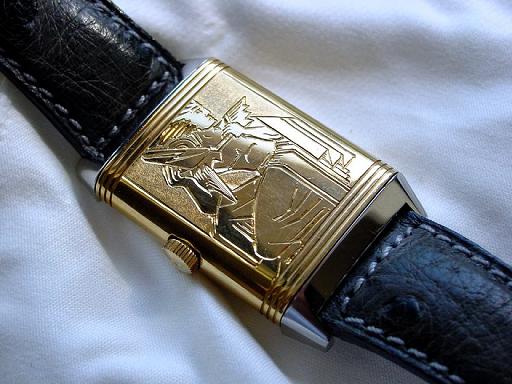 Click picture to enlarge This engraving was done by a friend of mine who is an expert in hand engraving. Hand engravers are a rare breed of artist and only a select few are capable of doing an engraving of “pictures” on a metal surface. The following interview and tutorial is with Paul C., the artist who engraved my Reverso. Paul will walk us through a step by step process of hand engraving on another watch. Paul, how did you become an engraver? I did my apprenticeship in New Zealand with a 10,000 hours program in hand engraving. The apprenticeship included different types of calligraphy in all styles, old English and then more involved stuff such as ribbon script, more seen on the pocket watches and antique silver brushes. Then I went into jewelry manufacturing with this experience of hand engraving. We set out here in Northern California in 1977, and opened up a company called Kiwi Gold which does a line of hand engraved jewelry that is in different stores around the country. A lot of the engraved pieces are wedding rings (that is our main product) in 14 and 18 karat gold, and platinum. We do work for some major stores throughout the U.S.A. The engraved bands have a lot of the influence of the married people down in New Zealand. 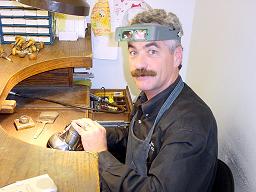 Click picture to enlarge So how do you determine whether or not a picture will lend itself to the watch? I remember when you did my watch we went through a lot of different images to find just the right one. It was interesting how you had to shrink down each image I submitted because they may have looked good in actual size but did not always work on a smaller surface when it was shrunk down. Right, it's like anything in the Tattoo business or a pen and ink drawing, when you are reducing the lines of any small detail picture, it can become messy and distract ones eyes. So sometimes it is easier to eliminate the lines, so they have more contrast, because what you are really doing is painting on a metal canvas. Can you look at something and know whether or not it is going to work? Pretty much yes, but if you are in doubt, you can reduce it down and see what the lines are going to appear and what lines aren't, and what you want eliminate. What do you use to reduce it? I use a photocopy machine. The engraving tools that you use, are they special steel? They are a carbon steel that I use to engrave only on gold and sterling silver, and there are other kinds of engravers that you can use. Some people get pretty creative in the hardening of the engraving tools and a lot of engravers will have their own tools customized to suit their engraving style. As an example, to do western engraving you will have a wider angled tool and maybe a flat engraver, where as, I usually use more of a square looking engraver and favor one of the corners which I can roll from side to side to either narrow or widen my cut. 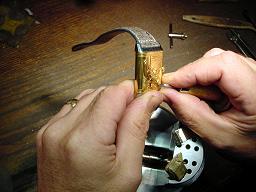 Click picture to enlarge Do only certain tools work on certain metals? Obviously you couldn't use your tools on steel. Right. Steel engravers have to be specially treated and hardened. Is it much more challenging to engrave on steel than it is on gold? Steel is a lot harder, no question about that. I have done some steel engraving. Here is a steel gun that I engraved that you might want to look at. Don't worry, it's not loaded. 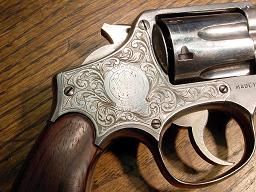 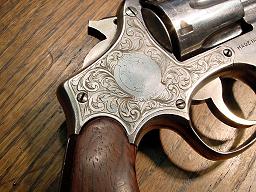 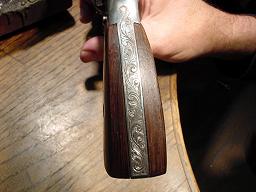 Click pictures to enlarge Did you find the gun to be a lot more difficult than gold or silver engraving? Yeah it is definitely a lot more difficult, and more time consuming. It's a lot more difficult to hold the gun stationary to engrave. Gun engraving is a service that is a particular art form you take on, and if you are a gun engraver that is pretty much your niche in the business. Your Engraving blocks are a lot heavier and it's done with a lot of chasing, meaning they use a longer tool than mine and they tap it with a hammer. What about titanium? Titanium is too hard, the lightest material in titanium is engravable by machine and I have done some engraving on titanium but as I say it has a tendency to bur out of the point on the tool so you need a lubricant to do it. I've done a lot of work with machine engraving. I apprenticed under an engraver when I was 15, but I found that I was more limited on machine engraving, and the stuff I really wanted to do I couldn't get blocked properly in the machine. Right, exactly. You can be much more creative with hand engraving. The other thing is that now that they have the “graver meister”, are you familiar with that? It is a machine that is actually great for gun engravers. It has a pneumatic punch, which is great for gun engraving. Do you take on commissions to engrave guns ? No I don't engrave guns, that was more of an experiment to test the difference between hand engraving and using the graver meister. I wanted to see what the time saving advantages were. Well I think we're ready to engrave my watch. I've chosen a vintage Universal Geneve in 14 kt gold. I'd like to have ‘TZ” engraved on the back, it's the logo we use for TimeZone.com. Okay, let's start. I'm going to block the watch in this engravers vice. 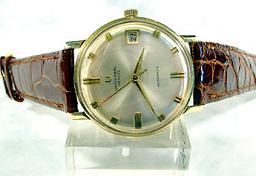 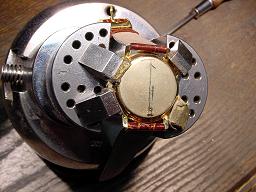 Click pictures to enlarge What is the general procedure on this thing? You draw out the picture first on the watch and then engrave it? First I lay a light wash of Chinese white (a water based paint) which enables me to lay a film over the area to be sketched on. This enables me to hold my pencil work in place and it doesn't rub it off. Then I highlight the image to be engraved on the paint. 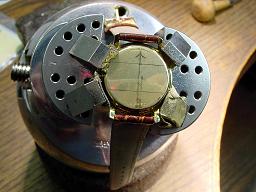 Click picture to enlarge So basically does an engraver estimates the cost for a job like any other craftsman, that is, by man hours, so the more intricate the design the more expensive it becomes? Correct. The more time consuming, the more expensive. But sometimes a a real linear and straight line is often more difficult to do than something ribbony and script. When you are doing Roman lettering it is a lot more difficult than script lettering because with Roman lettering it has to be cut at the angles, it has got to be the same on both sides. Whereas with the script lettering it is like a ribbon and can fall any which way it wants. Now when you did the Reverso watch for me, I must have brought you 6 or 7 images before we picked out the right one. You put in a background to give it some contrast so I could see the the image better. The image is from one of the plaques in the RCA building in New York City. Yeah, yeah that background is a nice frosting. Because we couldn't sand blast that. Okay, why don't you explain what you're doing now. O.K. you will see that one line of the top of the "T" is different than the other. So you have to make your tiger cut, which is your main cut, on both sides as close to symmetry as possible. See what I'm saying, the angle on this one is a little bit different than the angle on that one. So now I have to go back on that one and roll this one on this side and tilt it back so you kind of start going back and forth balancing and each time you do that you are cutting a little deeper each time. Symmetry is of the utmost importance. 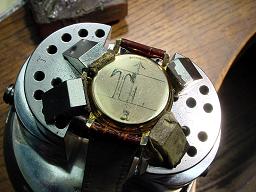 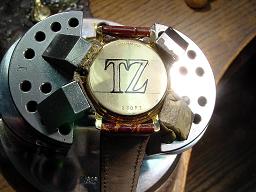 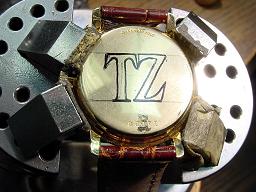 Click pictures to enlarge Whoa, I don't know if the reader of this will understand what you just said by looking at the pictures, but I hope so. It seems that part of the art is how you engrave the depth of the cut? Oh yes, and I am a heavy engraver. I am one of those guys who cuts with total commitment. I notice some little gold shavings are flying around as you cut, you must have to wear safety goggles when you do this stuff. For all the years I have been doing this I have got to say I have been pretty lucky, I haven't ended up with too much stuff in my eye. You see how I keep going back and back and evening it out and then what I will do is I will just double cross check and make sure these are even. I am using a pair of dividers here. Of course when you are engraving on a disc like this it is hard to make sure that everything I lined up, horizontal and vertically correct and straight. For the first cut for the “Z”, I want to make sure I have it absolutely as wide as the “T”, so symmetry is very important in engraving. 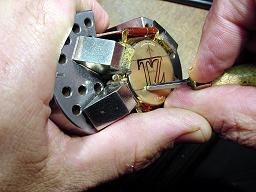 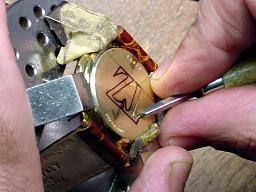 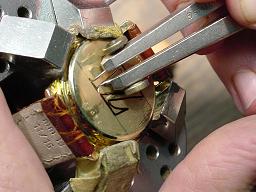 Click pictures to enlarge So if someone wanted to do their initials, how do they go about picking the font or the script type for the initials? Is it personal preference? If you are doing a combination of letters and your name is James Smith, and you were doing it for a finger ring you've got to be careful what the shape of the letters are because the J will drop down further down the line than an S will, so we kind of got to figure out your best combination the letters will go. So if somebody wants an image like my watch, you have to be realistic about what image is going to work on a smaller surface and what won't, right? Yes, exactly. Is it easier once you have a first cut because you create a groove? Is the first cut the lightest? Yes, this will assure that is exactly where I want that line to be, and once I have made that line and it looks good, and I am committed to it, then I will go back in and really get into it, lean the tool over like that. It really picks up the light and starts looking like a beveled edge. 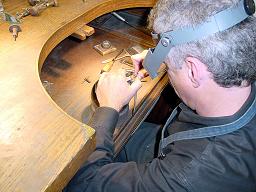 Click picture to enlarge How do you decide on what texture to use? I don't know, it depends on what the piece is. You can have the customer do it, but you know the more detail, the more labor, thus the more expensive. So the more time you put into it the more costly it becomes. Do you have to be a pretty good cartoonist, like a tattoo artist. It helps if you have some artist ability for sure. See now as I cut into this, there is various combinations that you can do to shade this in. I'll sketch this one on for you right here. I am just kind of leaning it over so making sure all the lines are all even and symmetrical. It appears like it's almost there but there is still so much touch up work. When you get your engraving tool in the deeper groove now, is it easier to cut it deep? Yeah I have a little more confidence. I know where I am going and I don't have to play as much attention because now it is kind of like Braille, you know. I can feel it, it is already in that groove there so I don't have to be quite as cautious but sometimes when you drop your guard that's about when the snake will bite you, heh? Then you got that problem and you certainly don't want this tool to go into your hands. It's met me there before. 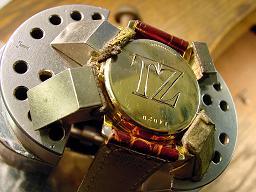 Click picture to enlarge I had the same problem when I fixed watches. You put too much torque on a screw driver, and “ouch”. Is that an occupational hazard for you, having the cutter slip and gouge your hand? It depends on your skill, perhaps in the beginning stages of learning. 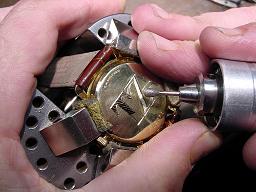 Click picture to enlarge Hey Paul, it looks done..! (Actual lapsed time was about 90 minutes). There it is. As we say in the engraving business, easy. And there was no lubrication in that, that was just strictly the metal to the gold. No lubricant, no kerosene, oil, wintergreen, no nothing else. 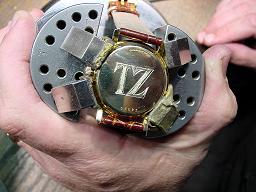 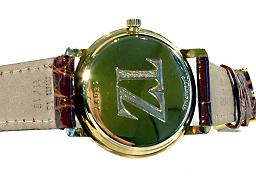 Click pictures to enlarge Do people use a lubricant sometimes? Some people do, yeah. It seems it would be easier to slip that way. Some think it's a cleaner cut. If I really want to get a different cut, I will actually polish the graver so the facet on the tool will be highly polished. But in work like this you don't need that high a polish of the engraving tool. The other thing that is really important with the engraving is to regulate the depth of the piece all over so the entire piece has a consistency in depth. What is the most difficult thing to engrave? Portraits. I heard you were commissioned to do some portraits of sports celebrities on coins for New Zealand when you lived there, how did you get the commission? I was very fortunate, I had the talent and the ability and so they commissioned me to do three original coins. They were the three coins that were hand cut coins by myself given to New Zealand's top three sportsman of that year. These are fairly big pieces, I mean these coins would probably measure at least 2 inches in diameter or more and were solid gold and were probably at least 2 millimeters thick. So what I did was to make three practice plates on copper first just so I got to figure out the lines in his face and where everything goes. I prepared for a day or two just cutting the copper plates. When I felt comfortable with the copper plate, I began to cut into the coin metal direct, and I knew the different textures I was going to use to kind of render the background and the foreground, so I didn't reverse them. It's not like a book you read on something like this. It was kind of going in blind and I was comfortable and I had to pick up the texture of the clothes he wore so I wanted to be able to make sure that look could be transmitted into the metal. Fantastic! Now I have a personalized TZ watch. Thanks so much for the engraving and the tutorial. If someone from the TimeZone Community wants to contact you about an engraving commission, how should they go about it? Here's my email: JohannPaul@aol.com Other Engraving SamplesClick on pictures to enlarge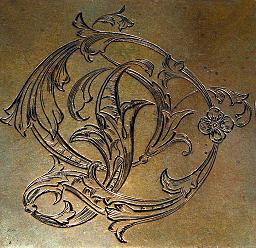 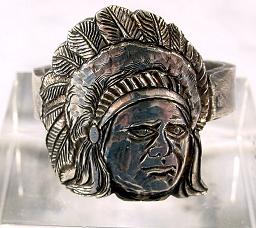 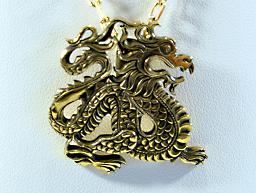 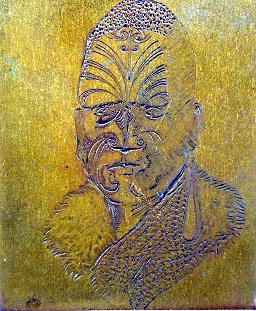 |

Back to top of page |
Return to Time Zone
Home Page
Copyright © 2001-2004 A Bid Of Time, Inc., All Rights Reserved
E-mail: info@TimeZone.com